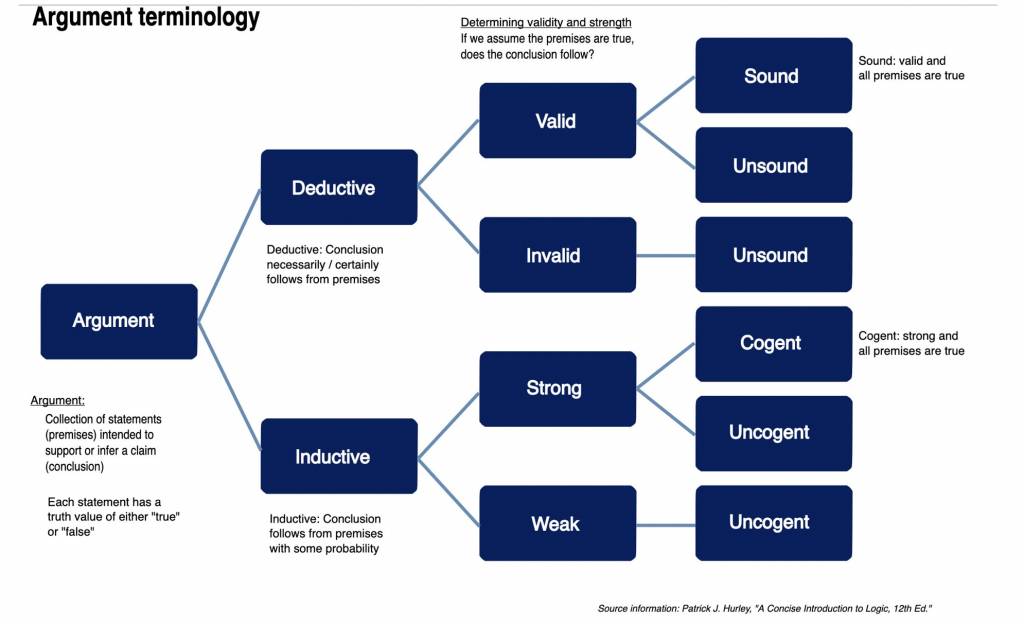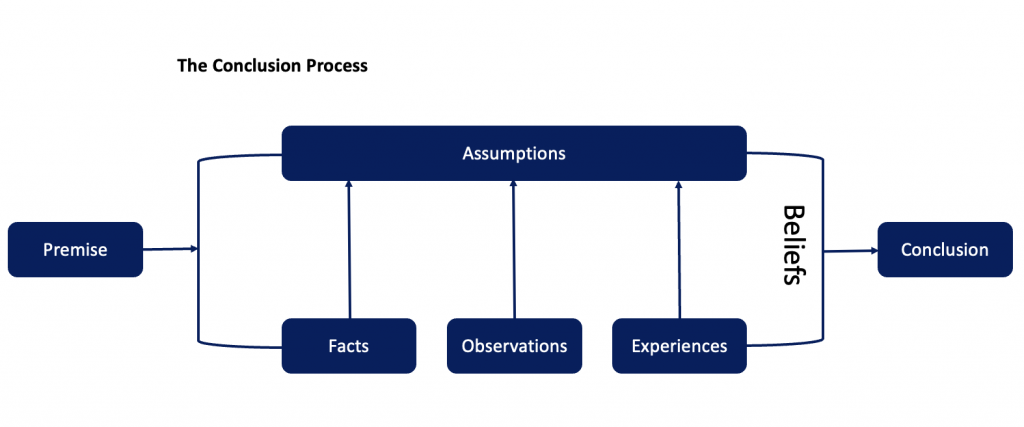What is Critical Thinking?
The term critical comes from the Greek word kritikos meaning “able to judge or discern”. Critical thinking is the ability to consistently apply sound judgment based on reliable information for the purpose of making good decisions. The best way to think about critical thinking is that it’s the type of thinking that should be applied to solving complex, complicated, and ‘wicked’ problems where finding the best solution is critical to success.
Before deep-diving into Critical Thinking, it’s useful to understand that there are other forms of thinking, the application of which are often more appropriate than critical thinking. This is because critical thinking is more difficult than non-critical thinking, can require significant research and time, and is often not warranted as the problems being solved are simple and their solutions are of little consequence. For example, you wouldn’t normally use critical thinking to help you decide whether you should choose coffee or tea for your morning beverage. The effort-to-reward ratio doesn’t stack up.
Some other forms of thinking include automatic thinking, which is often based on heuristics and applied to simple, everyday decision-making tasks such as coffee vs tea. Automatic thinking is sometimes referred to as ‘system one thinking’ thanks to the success of Daniel Kahneman’s best-selling book ‘Thinking Fast and Slow’. Other forms of thinking include analytical, design, systems, creative, abstract, and convergent and divergent thinking. These are all valid forms of thinking that when applied in the right circumstance help to inform decisions.
Critical thinking is a process-oriented approach to thinking that can help almost anyone be better at solving problems, rendering judgments, and making good decisions.
In simple terms, Critical thinking is a three-step process involving clarity, conclusion, and decision.
Critical thinking cannot, however, make you smarter as your innate Intelligence Quotient (IQ) is relatively fixed. Critical thinking can, however, help you to form better conclusions and make better decisions, maximising your mental capability and capacity which results in far better outcomes attributed to you. Consistently applying critical thinking to solve complex problems can be your superpower that allows you to surpass those with higher IQs who do not apply the critical thinking process, resulting in less consistent outcomes.
Before we delve into finding clarity, drawing conclusions, and making sound decisions, it’s important to understand logical reasoning.
Two kinds of logical reasoning are often distinguished in addition to formal deduction: induction and abduction. Given a precondition or premise, a conclusion or logical consequence, and a rule or material condition that implies the conclusion given the precondition, one can explain the following.
Deductive Reasoning
Deductive reasoning determines whether the truth of a conclusion can be determined for that rule, based solely on the truth of the premises. For example: “When it rains, things outside get wet. The grass is outside, therefore; when it rains, the grass gets wet.” Mathematical logic and philosophical logic are commonly associated with this type of reasoning.
Inductive Reasoning
Inductive reasoning attempts to support a determination of the rule. It hypothesizes a rule after numerous examples are taken to be a conclusion that follows from a precondition in terms of such a rule. For example: “The grass got wet numerous times when it rained, therefore: the grass always gets wet when it rains.” This type of reasoning is commonly associated with generalization from empirical evidence. While they may be persuasive, these arguments are not deductively valid.
Abductive Reasoning
Abductive reasoning sometimes called inference to the best explanation, selects a cogent set of preconditions. Given a true conclusion and a rule, it attempts to select some possible premises that, if true also, can support the conclusion, though not uniquely. For example: “When it rains, the grass gets wet. The grass is wet. Therefore, it might have rained.” This kind of reasoning can be used to develop a hypothesis, which in turn can be tested by additional reasoning or data. Diagnosticians, detectives, and scientists often use this type of reasoning.
Within the context of a mathematical model, these three kinds of reasoning can be described as follows. The construction/creation of the structure of the model is abduction. Assigning values (or probability distributions) to the parameters of the model is induction. Executing/running the model is deduction.
There are numerous other forms of reasoning, however, for the purposes of getting started with critical thinking deductive, inductive, and abductive reasoning are the most widely used forms of reasoning and work to solve most problems. The image below details the basic steps involved in applying deductive and inductive reasoning to either validate a premise based on a sound conclusion or vice versa.

Almost all problems have some form of argument or premise that either validates the conclusion or is validated by the conclusion. We apply reasoning to validate the conclusion and/or premise. To help do this we can use a tool that can be remembered by the acronym FOEBA. FOEBA stands for Facts, Observations, Experiences, Beliefs, and Assumptions. We use FOEBA to perform research to help clarify the argument and ensure we have defined the problem correctly.
Facts
The facts of an argument contribute significantly to supporting or not supporting the premise and/or conclusion. It is important to perform sufficient research from a wide variety of sources to ensure you have all the relevant facts. You also need to ensure you understand the facts and how they apply in the context of the argument. Sometimes, facts can be difficult to find or prove for specific situations. This can be true for instances where the facts are unknown, some are missing, or they do not support a strong conclusion such as during an air crash investigation where the ‘black box’ failed.
Observations
Observations are useful in the absence of facts or when there are insufficient, known facts to fully support the argument. Using the crashed aircraft as an example, observing flames coming from one of its engines and flocks of albatross flying in the area might be a powerful observation that could contribute to solving the question of what happened. Equally, investigators’ observations at the crash site could help them establish that the aircraft hit a flock of albatross due to the presence of albatross feathers at the site.
Experience
Your experience and heuristics are very valuable assets as they are your firsthand account of similar situations and contribute to your knowledge, hence, your experience can also help you solve a problem. The closer your experience aligns with the problem you are trying to solve the more likely your experience will help. However, your experience can also lead you to make incorrect determinations as it is based on your past and the problem being solved may exist in the future where the situation is unknown. An example where your experience may be a powerful influence on you would be if you went to a restaurant and ended up with food poisoning. Your experience might cause you to conclude that eating in that same restaurant in the future will result in you getting sick again. You can see how this could be a biased presupposition based on your previous experience. Many changes may have occurred since you last ate at the restaurant, but I’ll bet you would find it hard to disagree with your experience and decide to eat there again in the future. The takeaway here is that your experience can have a positive or negative impact on your decisions so it’s always wise to understand this when using experience to help make decisions.
Beliefs
Like your experience, your beliefs can be a powerful influence on your decision-making. However, unlike your experience, your beliefs are much less likely to evolve over time and are much more likely to cause biases. Beliefs are established during your formative years and play a major role in your view of the world, circumstances, and situations and they can strongly influence your decisions. You only need to look through history to understand how people’s beliefs led to racist, homophobic, religious, and misogynistic policies and decisions that have resulted in mass oppression and wars. Having said that, belief in sound principles such as ‘fair play’, the proper uses of logical reasoning, and the truth of facts will likely be a positive influence on your decisions.
Assumptions
Solving complex and complicated problems is challenging. One of the main challenges is not having sufficient facts, observations or experiences, or beliefs to draw a valid conclusion. This is where assumptions can be used to fill the gaps in your hypotheses. Assumptions are thoughts you have that you presume to be correct. Based on your assumptions you can come to a conclusion. This is where you can fall into the trap of believing your assumptions are correct. When using critical thinking, you must always ask “how do I know my assumptions are correct”? The best approach to assumptions is to not make them without knowing how you arrived at them and if you cannot validate them.
The figure below shows the relationship between a premise, FOEBA, and the conclusion.

We hope this post has provided some valuable insights into the critical thinking process. Good luck incorporating critical thinking into your decision-making at work and in life more generally.
